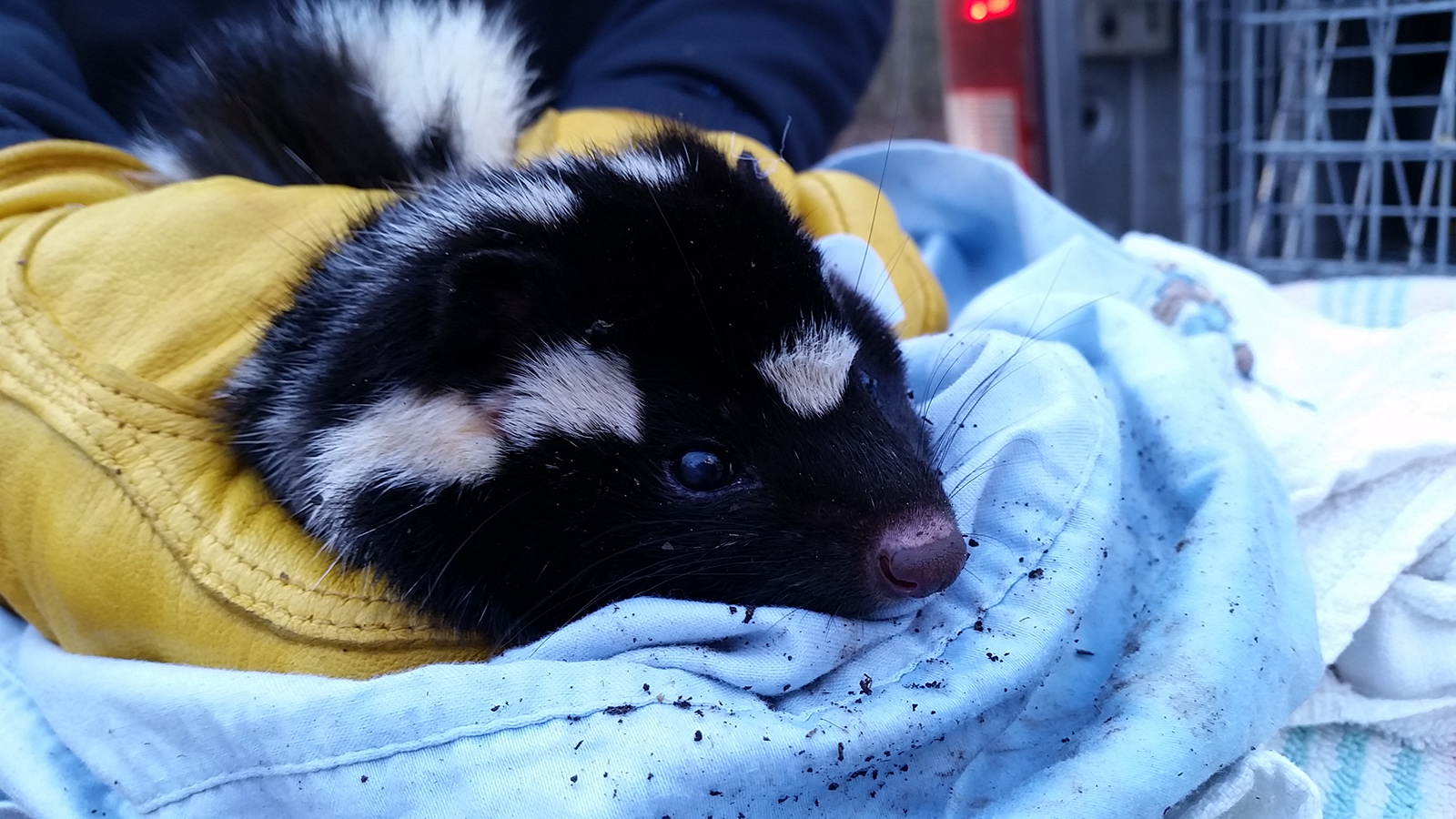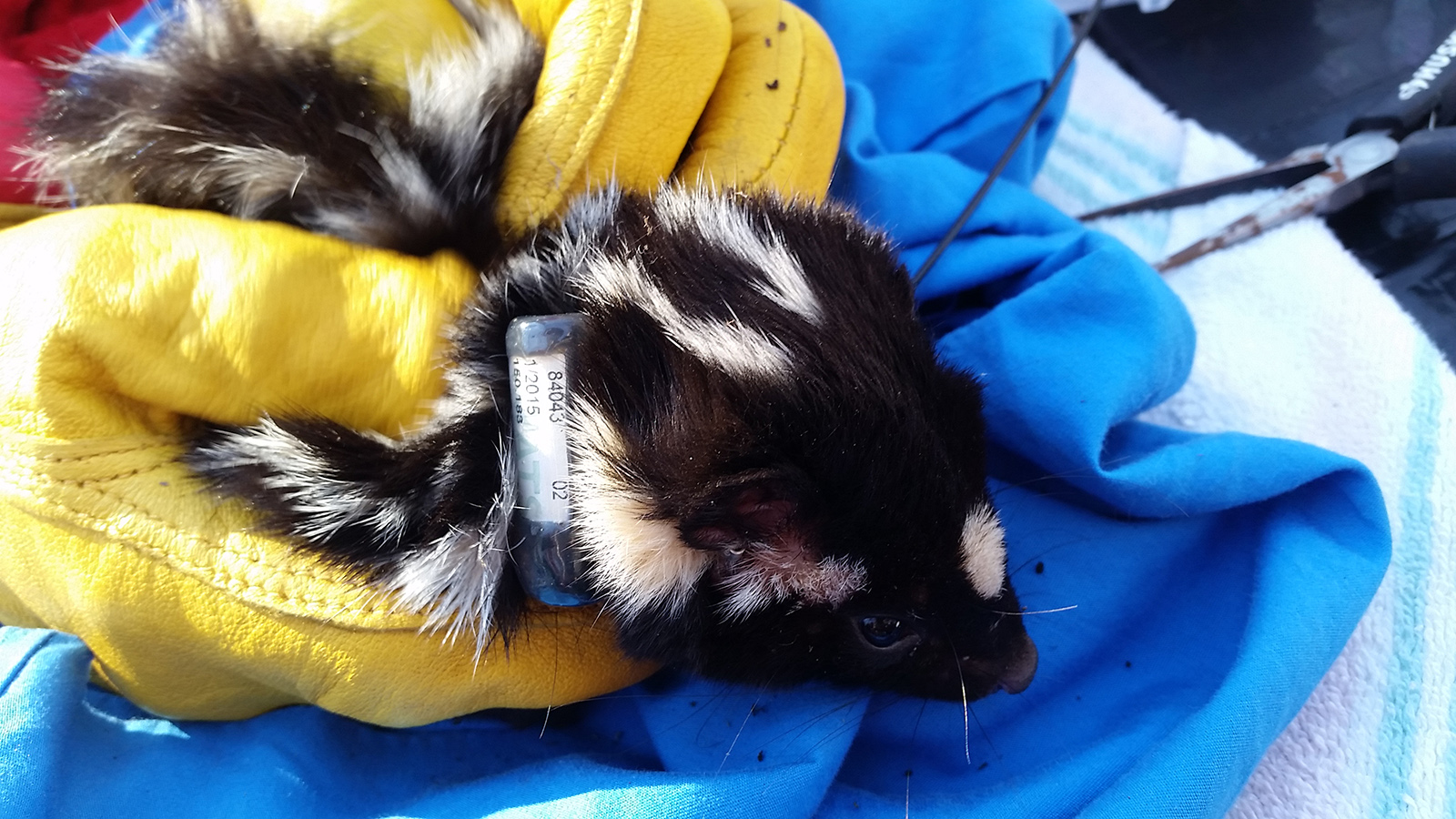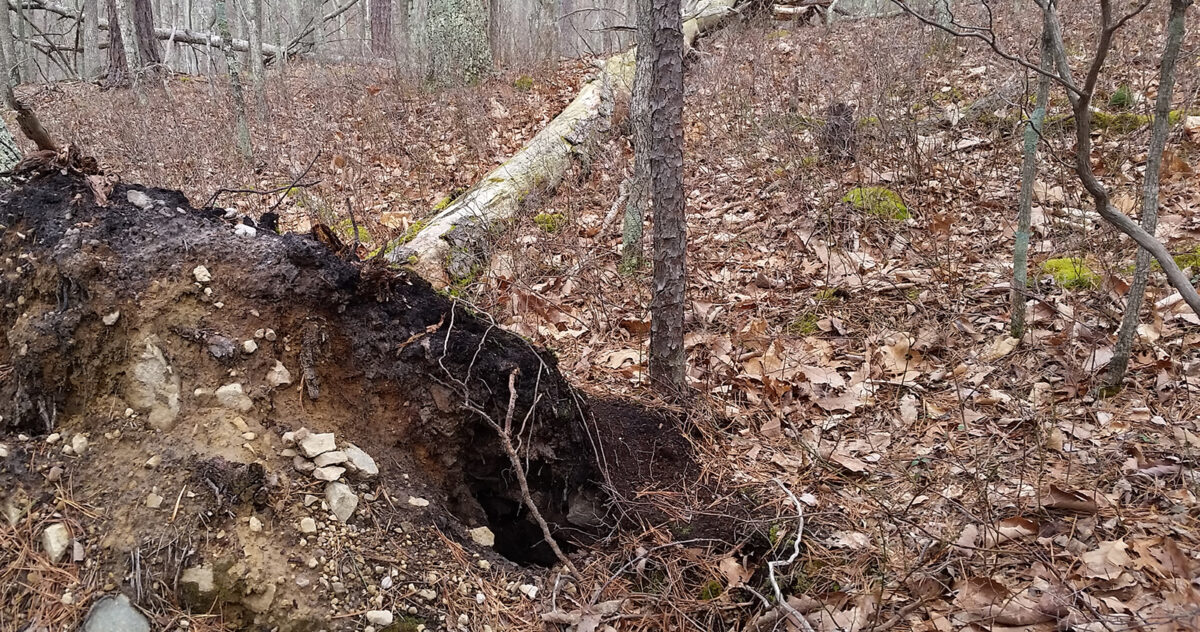By Mike Fies/DWR
Did you know there are two different species of skunks in Virginia? Almost everyone is familiar with the sight (and smell) of the common striped skunk (Mephitis mephitis), which is widely distributed throughout the state. You may have had one denning under your shed, seen one on the side of the road, or been unlucky enough to have one spray your dog. Few people realize, however, that Virginia is also home to a smaller and more secretive skunk species, the eastern spotted skunk (Spilogale putorius). Generally found only in the western portion of our state, this once-common species has been declining in numbers since at least the 1940s for reasons that are poorly understood and is listed as a Species of Greatest Conservation Need in Virginia’s Wildlife Action Plan.
Spotted skunks, like their striped cousins, are members of the skunk family and will spray an odorous secretion in self-defense as suggested by their Latin scientific name, which translates to “stinking spotted weasel.” However, at just 1–2½ pounds, spotted skunks are noticeably more slender and smaller than striped skunks and are not much bigger than a large squirrel. Their glossy black fur has between four and six broken white stripes along the back and sides that resemble “spots,” versus the two solid white bands that extends down the back of striped skunks. The feet of spotted skunks are more specialized for climbing (they are adept tree climbers), compared to the powerful feet of striped skunks that are adapted for digging. Spotted skunks are more carnivorous than striped skunks, primarily feeding on small mammals, insects, eggs, and even carrion. They typically breed in the later winter or early spring, giving birth to a single litter of one to six young born in May or June.

An Eastern spotted skunk. Photo from Virginia Tech
Until just a few years ago, very little was known about the distribution and ecology of spotted skunks in the central and southern Appalachian region. To help address this knowledge gap, the Virginia Department of Wildlife Resources (DWR) recently funded a three-year research project conducted by Virginia Tech’s Department of Fish and Wildlife Conservation, beginning in 2013. The project seeks to determine the population status of spotted skunks in Virginia, investigate forest and landscape conditions that influence their distribution, and study their movement patterns and habitat selection.
With the study now in its third year in 2016, researchers at Virginia Tech are beginning to report some interesting preliminary results. Using trail cameras stationed at 128 sites in 10 counties, the researchers have documented spotted skunks at 23 different locations. Habitat data collected at the surveyed sites suggest that spotted skunks prefer forests with thick understory vegetation, most likely to avoid detection from predators, particularly great horned owls.
Efforts are currently underway to radio-collar spotted skunks, monitor their movements and locate den sites. Initial data from 11 radio-collared spotted skunks has tracked them to multiple den sites in underground burrows, hollow logs, and tree cavities. Their nighttime movements have generally been within close range of their den sites. Radio tracking data will continue being collected throughout the spring and summer months.

Eastern spotted skunk being fitted with a radio collar. Photo courtesy of Virginia Tech
Currently, it’s unclear whether spotted skunks are truly rare, or just secretive and very difficult to find. As this research project continues, we hope to better understand where to look for these elusive animals and more accurately assess their population status in Virginia. Knowledge gained from this project will also help identify potential factors that may be limiting spotted skunk populations, which will be useful for making management recommendations and conserving this fascinating species.

Entryway to a male eastern spotted skunk’s den. Photo courtesy of Virginia Tech
How You Can Help
Please note that it’s illegal to trap or shoot spotted skunks in Virginia (unless they are causing damage) and their pelts may not be sold.
If you have trail camera photos or other verifiable evidence regarding occurrences of spotted skunks in Virginia, please contact DWR at wildlife@dwr.virginia.gov.
You can learn more about this study and receive updates at http://easternspottedskunk.blogspot.com/


